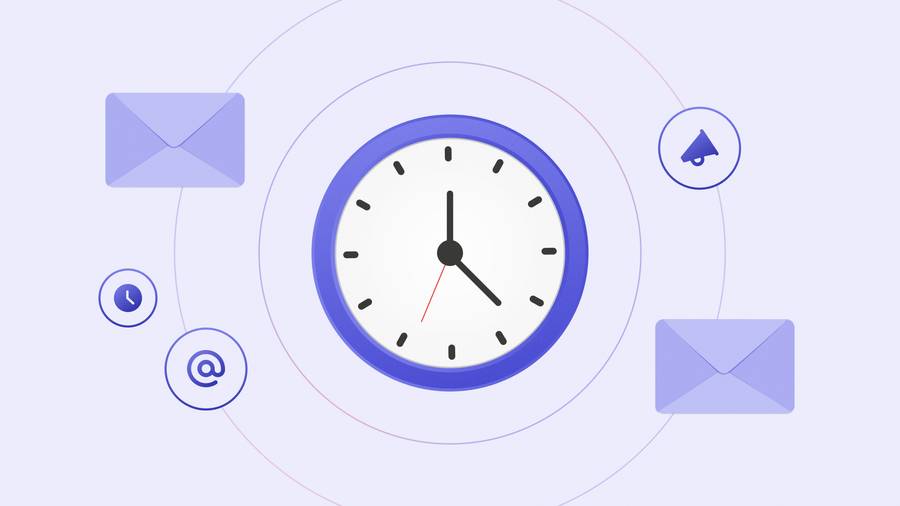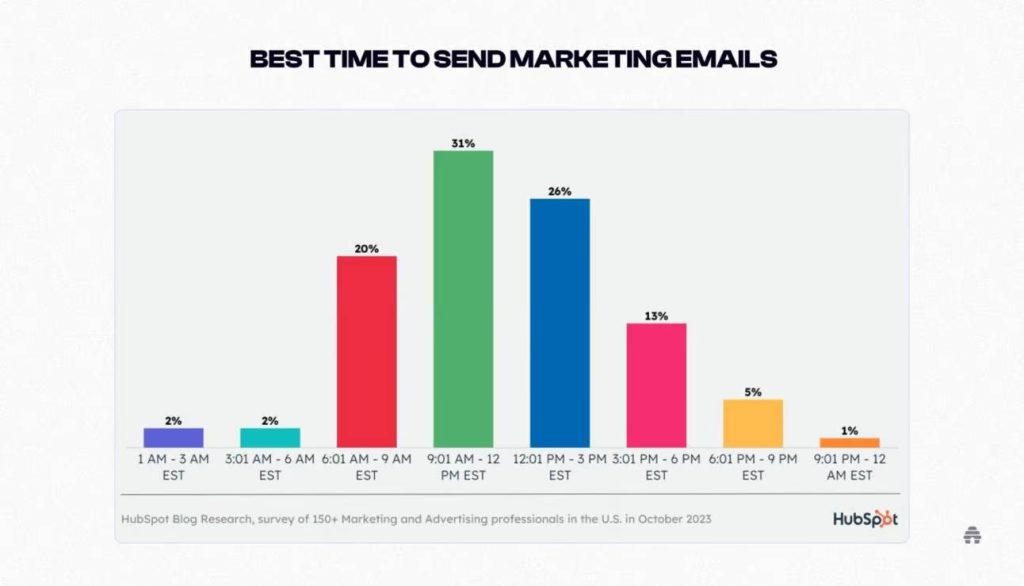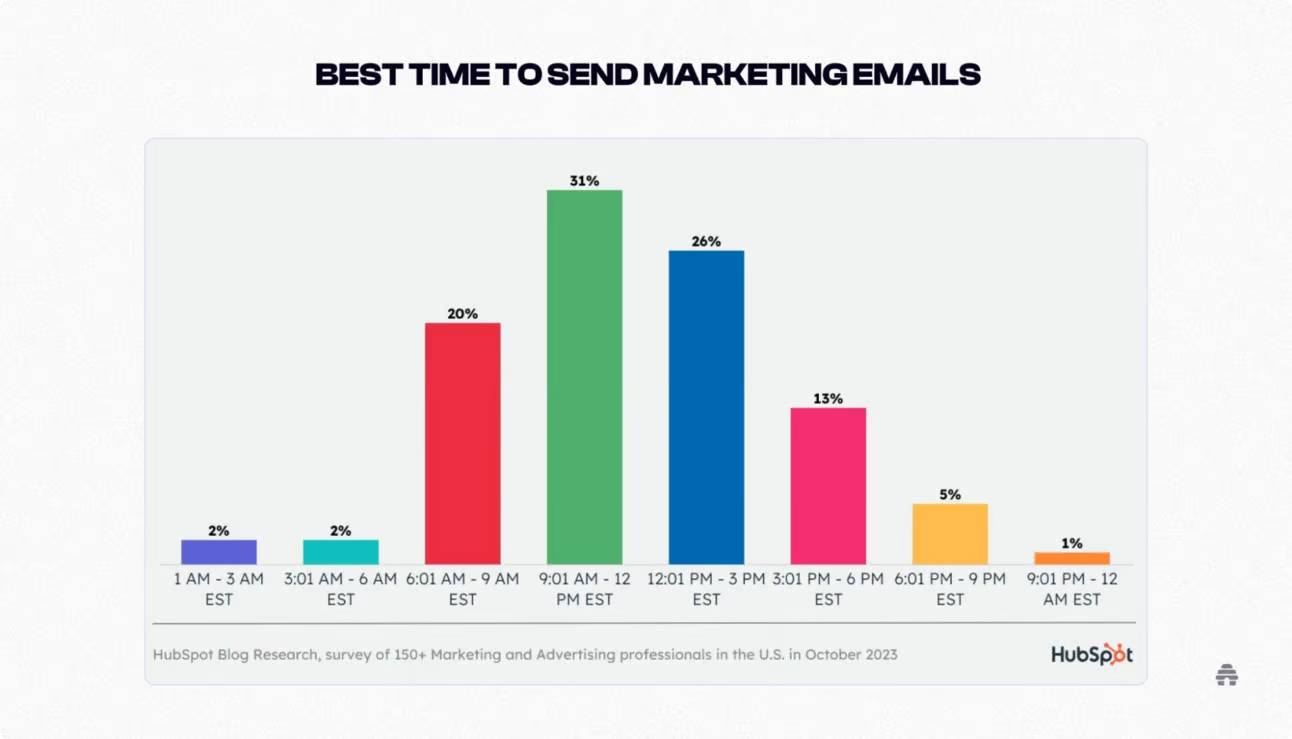Introduction
In the world of digital marketing, email remains one of the most powerful tools for engaging with potential customers, building brand awareness, and driving sales. However, the effectiveness of your email campaigns does not solely rely on the content you produce, but also on the timing of when you send those emails.
Whether you’re sending promotional emails, newsletters, or transactional emails, understanding the best time to send them can significantly affect open rates, click-through rates, and ultimately, the conversion rates.
While there is no universal “best time” that works for all businesses and industries, there are certain patterns, studies, and strategies that can guide you in optimizing your email send times.
In this blog post, we will explore how timing plays a crucial role in email marketing, the various factors to consider when determining the right time, and how you can fine-tune your approach to get the best results from your email marketing efforts.
Understanding The Importance Of Timing In Email Marketing

The timing of your email marketing campaigns can have a profound impact on your results. According to numerous studies, emails sent at certain times of the day or week tend to see higher engagement than others. The reason behind this lies in human behavior.
People have certain times during their day when they are more likely to check their inbox, read emails, and respond to calls-to-action. When you send an email at the wrong time, there’s a higher chance that it will get lost in the clutter of other messages in the recipient’s inbox, decreasing the likelihood of it being opened and acted upon.
On the other hand, sending your email at the optimal time can result in better visibility, more opens, higher click-through rates, and ultimately, greater conversions.
It’s important to note that the best time to send an email isn’t just about the time of day. It also involves understanding your specific audience’s habits, the type of email you’re sending, the industry you’re in, and even the geographical location of your recipients.
For example, what works for a B2B company might not work for a B2C e-commerce brand. While certain guidelines and trends can help, the ultimate goal is to find the timing that works best for your particular audience.
Factors That Influence The Best Time To Send A Marketing Email

Several factors contribute to determining the best time to send an email, from the type of email you’re sending to the time zone of your recipients. Let’s take a deeper look at these important variables.
1. Audience’s Time Zone And Geographic Location
The location of your recipients is one of the most important factors to consider. If you’re sending emails to an international audience, it’s crucial to take time zones into account. An email sent during the night in one time zone could arrive in the morning in another, meaning you’ll need to adjust your send times depending on where your audience is located. Using a segmentation strategy that divides your list by time zone can help you deliver emails at optimal times for each group.
For instance, if you’re marketing to customers in the United States, it’s essential to understand whether you’re targeting people on the East Coast or the West Coast, as the optimal sending times may vary.
In some cases, you may find that sending an email at 10 AM for East Coast customers is ideal, while for West Coast customers, the best time could be 10 AM Pacific Time, which would be 1 PM for the East Coast. Adjusting your email sends to ensure they are delivered during prime times for different regions will significantly improve engagement.
2. Audience Demographics And Behavior
Understanding the demographics and behaviors of your target audience is another critical factor in deciding when to send marketing emails. Different groups of people tend to have different email-checking habits based on their lifestyle and work routines.
For example, working professionals often check their email during business hours, particularly in the morning when they are starting their day or after lunch during a break.
In contrast, younger generations, such as millennials and Gen Z, may be more likely to check their email at various points throughout the day, especially in the evening after work or school.
If your target audience consists of parents or retirees, their email-checking times might be different from professionals working in an office. Parents might check their emails during nap times or after their children go to bed, while retirees may be more likely to check emails in the morning or late afternoon when they are not engaged in other activities.
By analyzing the habits and preferences of your audience, you can tailor your send times to better match when they are most likely to open and engage with your emails.
3. Type Of Email And Its Purpose
The type of email you’re sending also plays a role in determining the best time to send it. Different types of emails have different engagement patterns depending on their purpose and the content they contain.
For example, transactional emails, such as order confirmations or shipping notifications, may be more time-sensitive, and sending them as soon as possible may lead to better results.
These emails should be sent immediately after an action is taken, regardless of the time of day, as they often contain crucial information that the recipient is expecting.
On the other hand, promotional emails, such as discount offers or seasonal sales, may require more careful consideration of timing. If you’re promoting a time-limited offer, sending the email in the morning could create a sense of urgency and drive people to take immediate action. Similarly, if you’re sending a weekly newsletter, consider when your audience is most likely to have free time to read and engage with it perhaps on a weekend morning or during their lunch break.
4. Day Of The Week
Different days of the week tend to show different patterns of email engagement. While there’s no universal agreement on the “best” day to send emails, there are general trends that can inform your strategy. For example, emails sent on weekdays particularly Tuesdays, Wednesdays, and Thursdays—often perform better than those sent on Mondays or Fridays.
Monday mornings are often filled with a backlog of emails from the weekend, and people tend to prioritize urgent work tasks rather than checking promotional emails. Similarly, by Friday, many people are mentally preparing for the weekend and may be less likely to engage with emails that aren’t urgent.
Mid-week emails tend to see the best engagement rates because recipients are settled into their work week and have time to engage with promotional offers or important updates. Additionally, many people may check their emails during lunch breaks or mid-afternoon, making this an ideal window for sending emails.
The weekend can be tricky, as people often check their emails less frequently on Saturdays and Sundays. However, if your audience is B2C or geared toward consumers who shop online, sending emails over the weekend might actually boost engagement, especially if your emails contain promotions or offers that encourage weekend shopping.
5. Mobile Vs. Desktop Email Open Rates
In today’s mobile-first world, it’s essential to understand how your audience is viewing your emails. A large portion of email opens now happens on mobile devices rather than desktop computers.
Therefore, sending emails during times when people are likely to be on their mobile devices such as during their commute, lunch break, or in the evening while relaxing can help increase the chances of your emails being opened.
If your audience primarily uses mobile devices, it’s important to optimize your emails for mobile viewing, ensuring that they are easily readable and that links and calls-to-action are accessible.
Additionally, consider sending emails during times when people are most likely to be on their phones, such as early mornings, late afternoons, or evenings.
Using Data And A/B Testing To Optimize Email Timing

While general guidelines can provide a starting point for determining the best time to send emails, the most effective way to optimize email timing is through data analysis and A/B testing.
By testing different send times and analyzing the results, you can fine-tune your email strategy to find the time that works best for your specific audience.
A/B testing involves creating multiple versions of an email campaign and sending them to different segments of your audience at different times. For example, you could test sending emails at 9 AM vs.
11 AM on a Tuesday or sending the same email on different days of the week to see which time generates the highest open rates and click-through rates. By analyzing the results, you can determine which send times result in the most engagement and adjust your strategy accordingly.
Conclusion
The best time to send a marketing email depends on several factors, including your audience’s time zone, demographics, the type of email you’re sending, and the day of the week.
While there are certain trends and best practices that can guide your decision, the ultimate key to success lies in understanding your specific audience and continuously testing different send times to find the optimal strategy.
Timing is a crucial element in maximizing email engagement, and by investing time in research and testing, you can improve your email marketing performance and achieve better results for your business.

